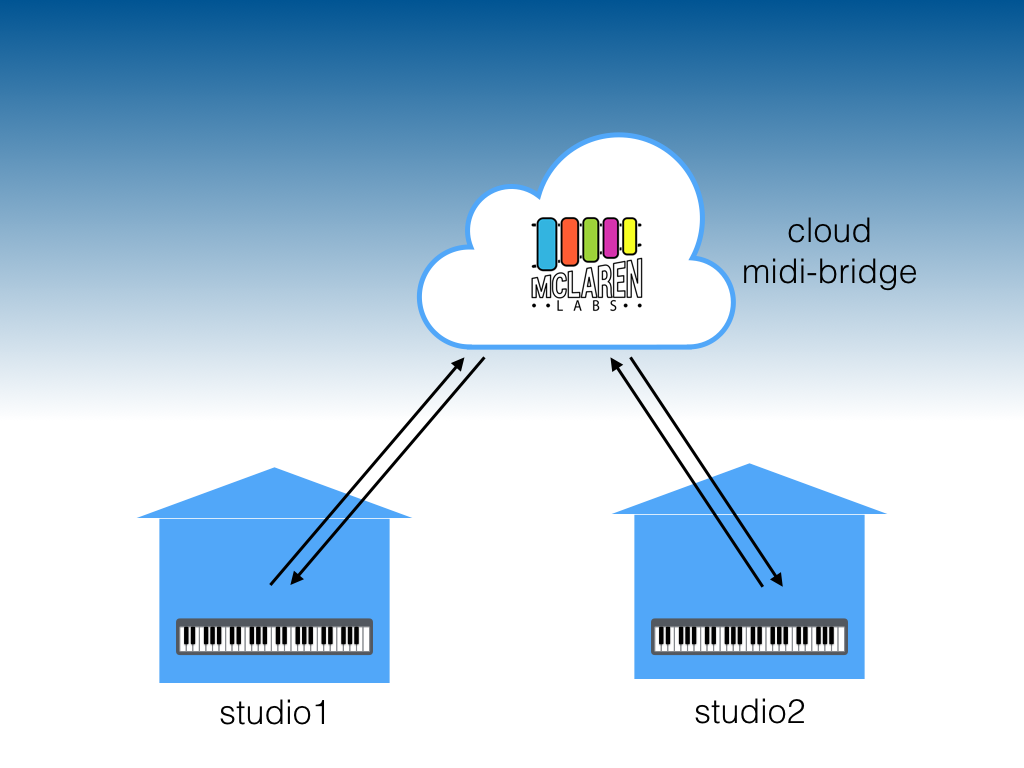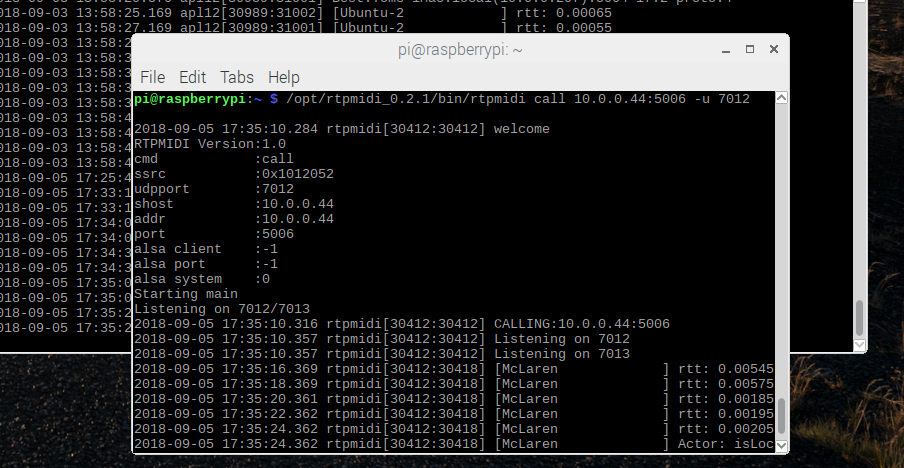Network Musical Performance and Cloud MIDI-Bridge
Remote musical MIDI collaboration has been an interesting academic research area for years, but has not been explored by many casual musicians. One reason is that the complexity of software that brings MIDI and Networking together makes it a little bit of a daunting endeavor. We think it’s time to open exploration to more people and make remote MIDI collaboration as easy as joining a Hangout.

What is Network MIDI?
Back in 2001, a group of researchers at Berkeley began to experiment with remote musical collaboration [1]. The idea was see if musicians separated by some distance could collaborate in real time over a high-speed network. Rather than sending real-time audio signals, MIDI events were transmitted between instruments at two different locations.
Read More »Network Musical Performance and Cloud MIDI-Bridge

